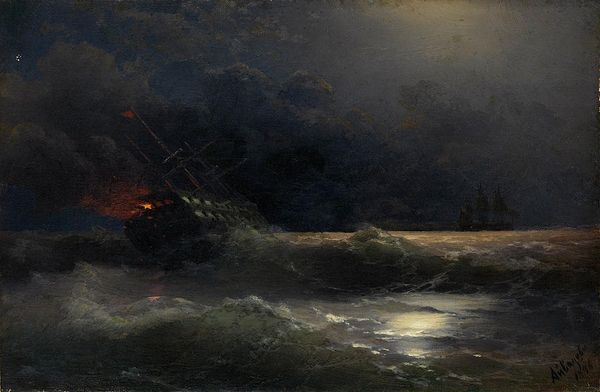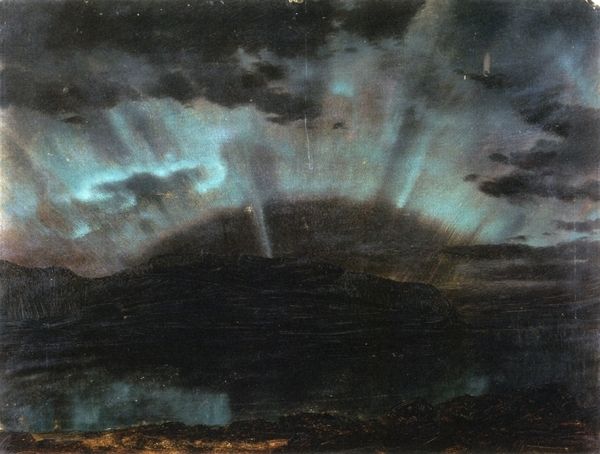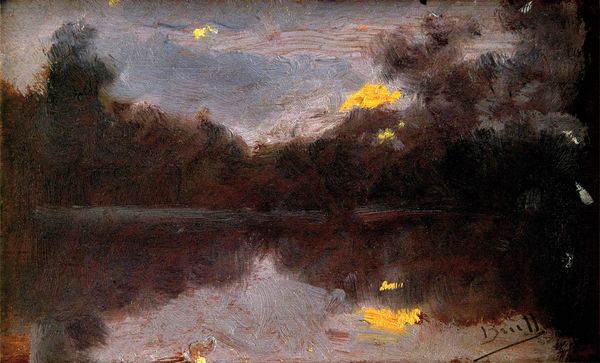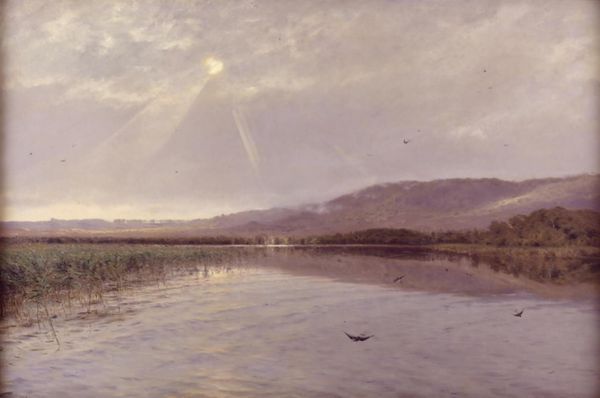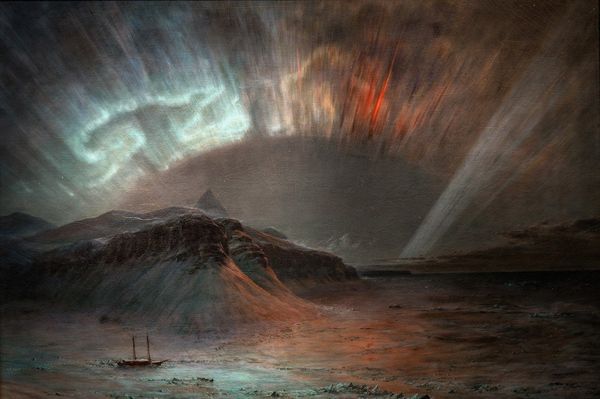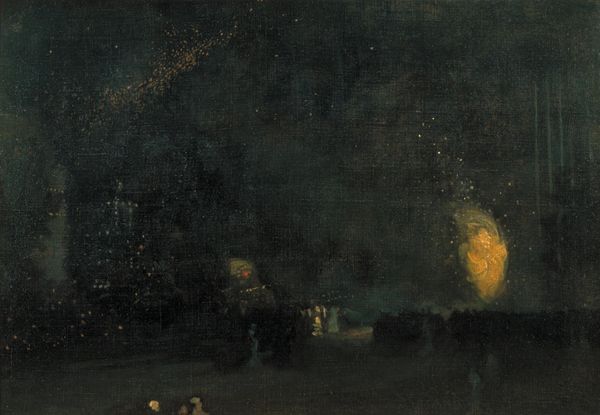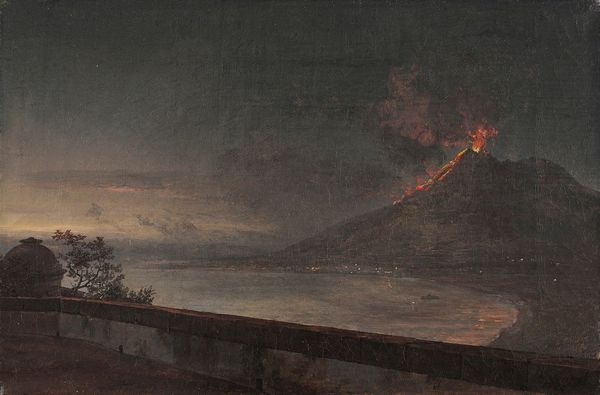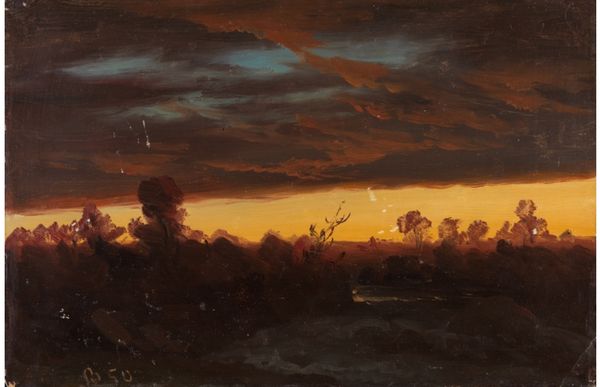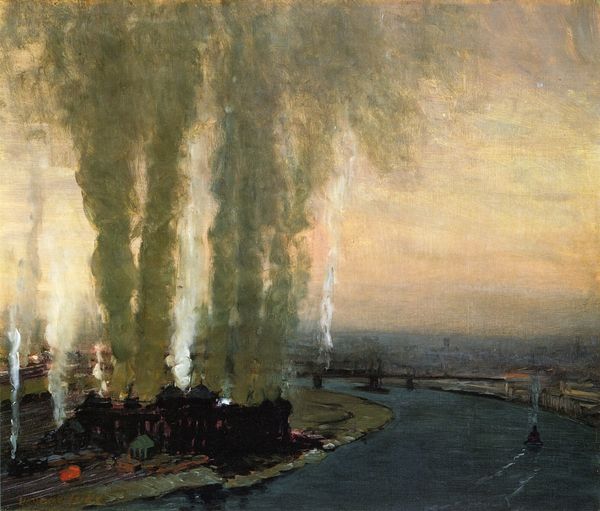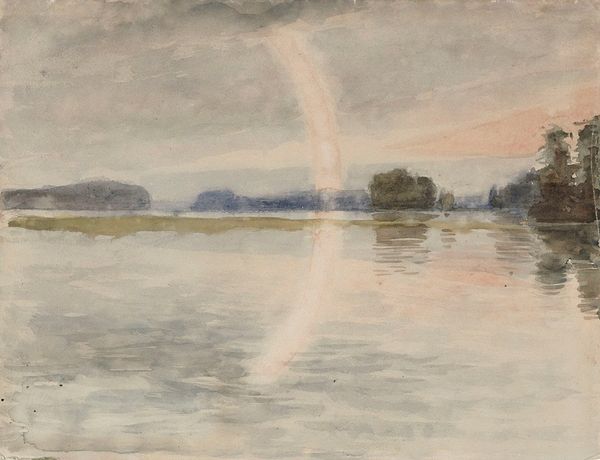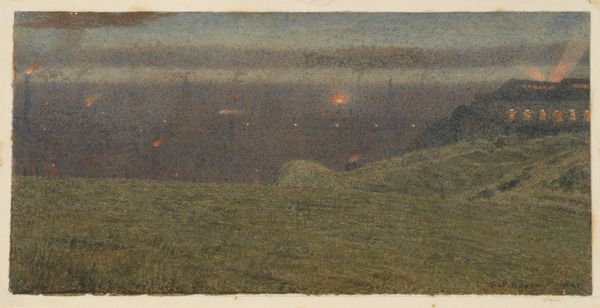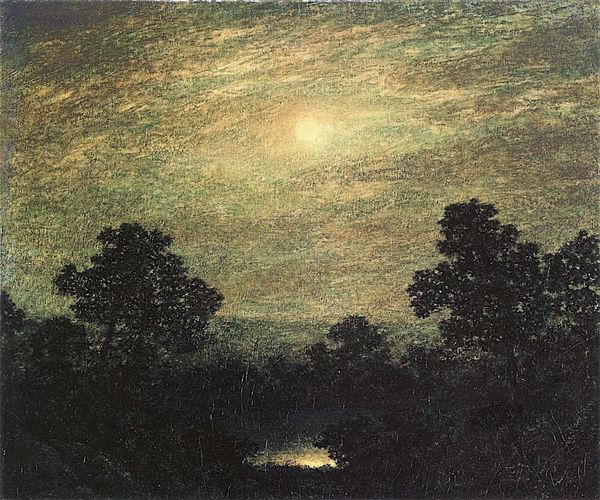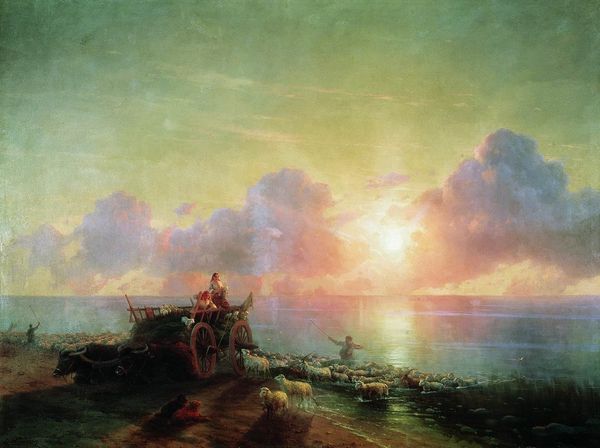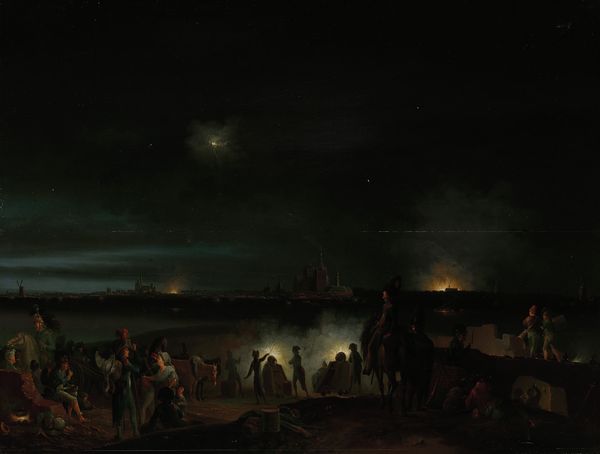
Copyright: Public domain
Curator: This is Frederic Edwin Church's "The Meteor of 1860," an oil-on-canvas rendering a celestial event observed that year. Editor: It's… somber. Ominous even. That dark, velvety sky and then the stark trail of the meteor. Was this supposed to be beautiful, or a warning? Curator: Church was deeply engaged with the scientific understanding of his time, alongside his Romantic sensibilities. He wasn't merely depicting a meteor; he was reflecting on humanity's place in the cosmos. Consider the historical context, the anxieties of the Civil War period looming over the United States. A fiery omen in the heavens was a powerful symbol. Editor: Symbol, yes, but let's think about the labor and the paint itself. Look at those fine, thin layers, creating that sense of depth and atmosphere. This wasn't mass-produced imagery; it required skilled labor, careful pigment mixing, the controlled application of oil. What was the cost, the time invested, to make something so seemingly transient feel so monumental? Curator: Absolutely. Church’s technique amplified the public fascination with the sky and celestial events. Artists such as Church played a vital role in mediating public understanding of natural phenomena during a time when science was rapidly advancing. Editor: Right, but what kind of pigments are creating that incredible luminescence of the meteor against the encroaching darkness? Was Church grinding those himself, or was he using commercially produced paints that were products of the industrial revolution? Understanding those material details adds another layer to interpreting the painting. Curator: Examining this work provides us with invaluable insight into the cultural values of the period. Editor: And what people valued putting their time and labor into creating! Something for us to contemplate as we look back, and consider how materials and representation shaped their view of the world.
Comments
No comments
Be the first to comment and join the conversation on the ultimate creative platform.
